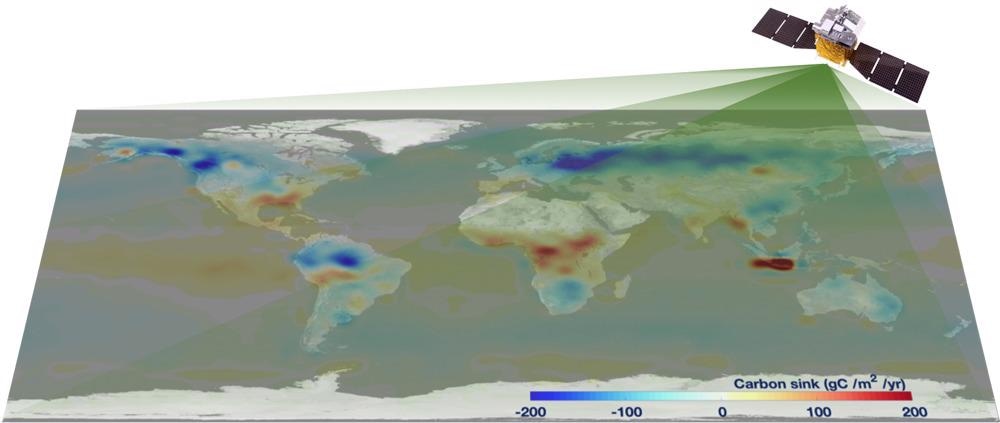As per a report from the Chinese Global Carbon Dioxide Monitoring Scientific Experimental Satellite (TanSat), nearly six gigatons of carbon is being discharged over the land per annum, which equals almost 12 times the mass of all living humans.
 The first global carbon flux map derived by TanSat observation. Image Credit: Yang Dongxu.
The first global carbon flux map derived by TanSat observation. Image Credit: Yang Dongxu.
Researchers have developed the first global flux dataset and map, making use of the data obtained regarding how carbon gets mixed with dry air, collected between May 2017 and April 2018. The study results were published in the journal Advances in Atmospheric Sciences on July 22nd, 2021.
The map was created by employing TanSat’s satellite observations to models of how greenhouse gases are exchanged among Earth’s land, water, atmosphere and living organisms. When this process takes place, hundreds of gigatons of carbon are being exchanged.
However, this has increased the carbon addition to the atmosphere to about six gigatons a year. This is a crucial problem that adds to climate change, according to Yang Dongxu, first author and a researcher in CAS Institute of Atmospheric Physics (IAP).
In this paper, we introduce the first implementation of TanSat carbon dioxide data on carbon flux estimations. We also demonstrate that China's first carbon-monitoring satellite can investigate the distribution of carbon flux across the globe.
Yang Dongxu, Study First Author and Researcher, Institute of Atmospheric Physics, Chinese Academy of Sciences
According to co-author Wang Jing, an IAP researcher, although the satellite measurements are not as precise as ground-based measurements, they provide continuous worldwide observation coverage that offers more information that cannot be availed from restricted or modified surface monitoring stations.
For instance, a monitoring station of a city might report a largely different observation than the one located in a remote village, particularly when there is a significant change in the climate.
The sparseness and spatial inhomogeneity of the existing ground-based network limits our ability to infer consistent global- and regional-scale carbon sources and sinks. To improve observation coverage, tailor-made satellites, for example TanSat, have been developed to provide accurate atmospheric greenhouse gas measurements.
Liang Feng, Study Co-Author, and Researcher, National Centre for Earth Observation, University of Edinburgh
The information gathered from these satellites like GOSAT from Japan, OCO-2 from the United States, and TanSat including some future missions will be employed to independently verify national emission intervention throughout the world.
According to Yang, the process will be monitored by the United Nations Framework Convention on Climate Change and will commence in 2023. This will be done in support of the Paris Agreement.
Generally, TanSat’s measurements would match with the data collected from other satellites.
This verification method will be helpful to better understand carbon emissions in real time, and to help ensure transparency across the inventories.
Yi Liu, Study Co-Author and Senior Researcher, Institute of Atmospheric Physics
The process will be supported by the next-generation satellite, the so-called TanSat-2, which is on the designing stage at present. According to Yang, the target would be to yield measurements to explain the carbon budget from a global scale down to separate cities.
The other contributors to the study include Lu Yao, Zhaonan Cai, Sihong Zhu, and Daren Lyu from IAP CAS; and Naimeng Lu from National Satellite Meteorological Center, China Meteorological Administration.
TanSat was financially supported by the Ministry of Science and Technology of China and the China Meteorological Administration. The project was launched in December 2016.
Journal Reference:
Yang, D., et al. (2021) The First Global Carbon Dioxide Flux Map Derived from TanSat Measurements. Advances in Atmospheric Sciences. doi.org/10.1007/s00376-021-1179-7.